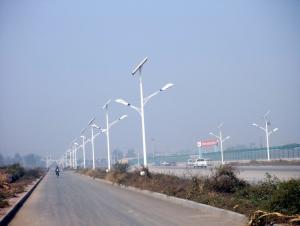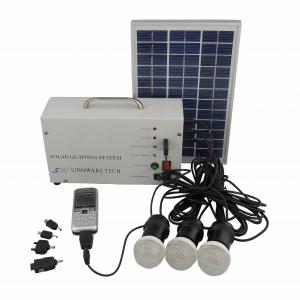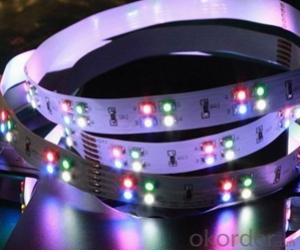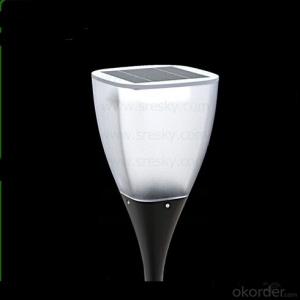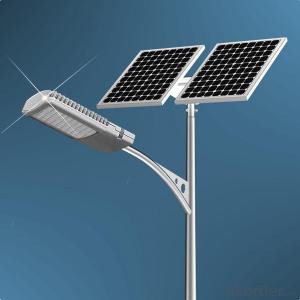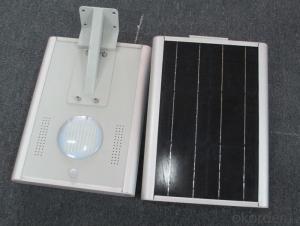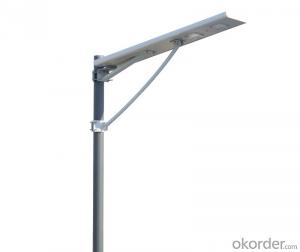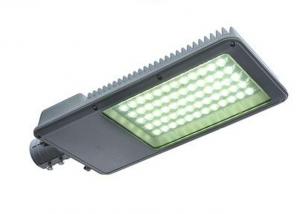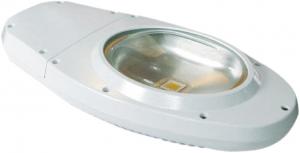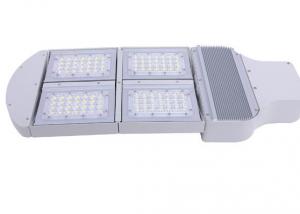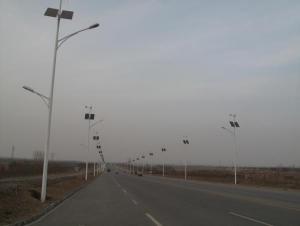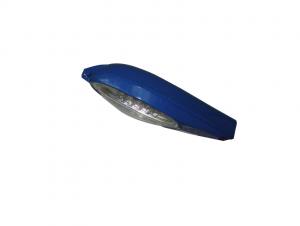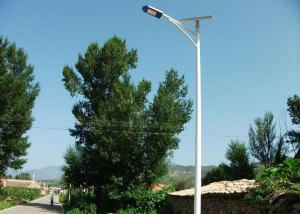Solar Light Solar Product Off Grid New Energy QD05
- Loading Port:
- Shanghai
- Payment Terms:
- TT OR LC
- Min Order Qty:
- 1 watt
- Supply Capability:
- 5000 watt/month
OKorder Service Pledge
OKorder Financial Service
You Might Also Like
1, Product desciption
Inverter circuits designed to produce a variable output voltage range are often used within motor speed controllers.
The DC power for the inverter section can be derived from a normal AC wall outlet or some other source. Control and feedback circuitry is used to adjust the final output of the inverter section which will ultimately determine the speed of the motor operating under its mechanical load.
Motor speed control needs are numerous and include things like: industrial motor driven equipment, electric vehicles, rail transport systems, and power tools. (See related: variable-frequency drive ) Switching states are developed for positive, negative and zero voltages as per the patterns given in the switching Table.
The generated gate pulses are given to each switch in accordance with the developed pattern and thus the output is obtained.
Solar power is energy from the sun. "Solar" is the Latin word for "sun" and
And Powerful source of energy. Without it, there will be no life.
Solar energy is considered as a serious source of energy for many years
of the vast amounts of energy that is made freely available, if harnessed by modern technology.
A magnifying glass can be used to heat up a small amount of water.
The short piece of copper tube is sealed at one end and filled with water.
And magnifying glass is then used to warm up the pipe.
Using more than one magnifying glass will increase the temperature more rapidly.
2, Features of the product
Inverters convert low frequency main AC power to higher frequency for use in induction heating.
To do this, AC power is first rectified to provide DC power. The inverter then changes the DC power to high frequency AC power. Due to the reduction in the number of DC Sources employed, the structure becomes more reliable and the output voltage has higher resolution due to an increase in the number of steps so that the reference sinusoidal voltage can be better achieved.
This configuration has recently become very popular in AC power supply and adjustable speed drive applications. This new inverter can avoid extra clamping diodes or voltage balancing capacitors. There are three kinds of level shifted modulation techniques, namely: 1,High and stable conversion efficienly based on over 4 years professional experience
2 ,High reliability with guaranteed +/-10% output power tolerance
3,Proven materials,tempered front glass,and a sturdy anodized aluminum frame allow modules to operate reliably in multiple mountily configurations
4,Combination of high efficicncy and attractive appearance
The first thing to figure out is the length of road in need of street lights.
This can be a small entrance road only a couple hundred of feet long to miles of streets through an area. Does the area currently have any type of lighting available.
What is the reason for needing street lights in this area
Is the electrical grid already nearby or would you need to call in the power company to bring in electrical lines.
If the electric needs to be brought to the area, how much is this going to cost? Depending on how far the grid electric is from the location of the needed lighting, this can be quite expensive.
How much lighting is needed on the street? Do the lights need to be dark sky compliant.
Do the street lights need to run from dusk to dawn or for only a specified number of hours at night.
Are the street lights able to dim in the middle of the night and still provide enough lighting.
These questions need to be answered before you can decide on how many lights you will need to complete the project.
3, Detailed Specification
Data Sheet of High Quality Solar Controller Tracer-1210RN
ModelTracer-1210RN
Rated system voltage12/24V auto work
Rated battery current10A
Rated load current10A
Max.battery voltage32V
Max.PV open circuit voltage100VDC
Max.PV input power12V 130W;24V 260W
Self-consumption<10ma(24v)< span="">
Charge Circuit Voltage<=0.26v< span="">
Discharge Circuit Voltage Drop<=0.15v< span="">
CommunicationTTL232/8 pin RJ45
Temp/compensation-30mV/℃/12V(25℃)
Working temperature-35℃~+55℃
Storage temperature range-35℃~+55℃
4, Product Image
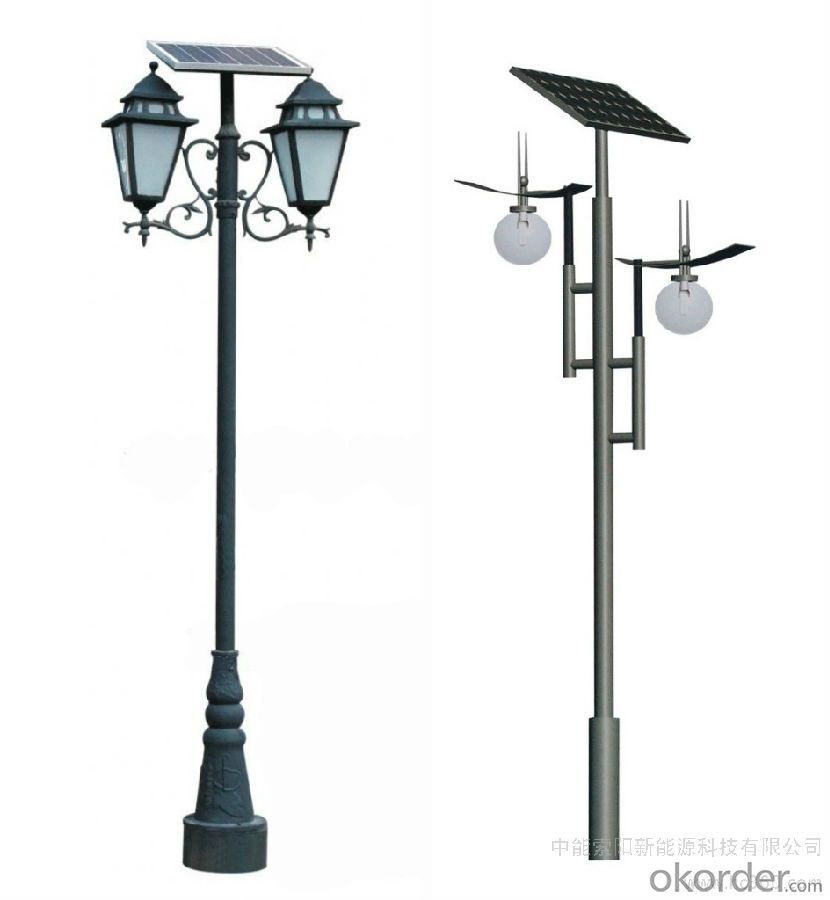
- Q:Can solar lights be used in conjunction with a generator?
- Yes, solar lights can be used in conjunction with a generator. Solar lights are powered by the energy they receive from the sun, while generators produce electricity using fuel or another power source. If the generator is used to charge the batteries of the solar lights, they can continue to function at night or in low light conditions. This combination can provide a reliable and sustainable lighting solution.
- Q:Can solar lights be used for outdoor festivals?
- Yes, solar lights can be used for outdoor festivals. They are a great eco-friendly option as they rely on the sun's energy to power up and provide illumination. Solar lights can be easily installed and moved around, making them perfect for temporary outdoor setups like festivals. They also help to create a vibrant and festive atmosphere while reducing the need for traditional electricity sources.
- Q:Can solar lights be used for landscaping?
- Yes, solar lights can be used for landscaping. They are a popular choice for illuminating pathways, highlighting garden features, and adding ambiance to outdoor spaces. They are energy-efficient, environmentally friendly, and easy to install without the need for wiring or electricity.
- Q:Do solar lights have a built-in timer for automatic on/off functionality?
- Certainly! Numerous solar lights come equipped with a built-in timer to facilitate automatic on/off capabilities. These timers are pre-set to activate the lights at dusk and deactivate them at dawn, guaranteeing that the lights are only in use when necessary and conserving energy throughout daylight hours. This attribute proves particularly advantageous as it obviates the requirement for manual operation or the need to remember turning the lights on and off daily. Furthermore, certain solar lights may even provide adjustable timer options, empowering users to personalize the lighting duration according to their preferences.
- Q:Do solar lights attract insects?
- Solar lights do not attract insects as they do not emit UV light, which is the main attractant for many insects.
- Q:How do solar lights handle electromagnetic radiation from communication systems?
- Solar lights are designed to handle electromagnetic radiation from communication systems without any significant impact on their functionality. These lights are equipped with electronic components and circuitry that are specifically designed to be resistant to electromagnetic interference (EMI). EMI refers to the disturbance caused by electromagnetic radiation from various sources, including communication systems. To protect solar lights from EMI, manufacturers often incorporate shielding techniques into their designs. Shielding involves the use of materials that absorb or reflect electromagnetic radiation, preventing it from interfering with the operation of the solar light. Common shielding materials include conductive metals like aluminum or copper, which are used to create barriers that block or redirect the radiation. In addition to shielding, solar lights may also include filters or suppressors to minimize the impact of electromagnetic radiation. Filters can be used to block specific frequency ranges that are known to cause interference, while suppressors can be employed to reduce the amplitude or intensity of the radiation. Moreover, solar lights are typically tested and certified to comply with electromagnetic compatibility (EMC) standards. These standards ensure that the lights can operate without interference in the presence of electromagnetic radiation. Manufacturers conduct rigorous testing to ensure that solar lights can withstand the typical levels of radiation generated by communication systems without any adverse effects. Overall, solar lights are designed to handle electromagnetic radiation from communication systems effectively, thanks to shielding, filtering, and other mitigation techniques. This allows them to operate reliably in various environments, including areas with high levels of electromagnetic activity.
- Q:Do solar lights save energy?
- Yes, solar lights save energy. They harness the power of the sun to generate electricity, eliminating the need for traditional energy sources. This makes them an environmentally friendly and cost-effective alternative to traditional lighting options.
- Q:Are solar lights suitable for hiking or camping trips?
- Yes, solar lights are suitable for hiking or camping trips. They are lightweight, portable, and do not require batteries. Solar lights can be charged during the day using sunlight and provide a reliable source of light at night, making them an eco-friendly and convenient option for outdoor adventures.
- Q:How long does it take for solar lights to charge?
- Solar lights can take different amounts of time to charge depending on various factors. Typically, it will take approximately 6 to 8 hours of direct sunlight for solar lights to reach a full charge. However, this timeframe can be influenced by factors such as weather conditions, solar panel wattage, and battery capacity. In areas with less sunlight or on cloudy days, the charging time for solar lights may be extended. It is also important to note that the initial charging process for solar lights may take longer, usually around 2 to 3 days, to fully charge the battery. To ensure the best charging results, it is recommended to place the solar lights in a location that receives ample sunlight throughout the day.
- Q:Are solar lights suitable for parking garages?
- Yes, solar lights are suitable for parking garages. They provide a cost-effective and environmentally friendly lighting solution for parking areas. Solar lights can be easily installed, require minimal maintenance, and can operate independently from the grid, making them suitable for outdoor applications like parking garages.
1. Manufacturer Overview |
|
|---|---|
| Location | |
| Year Established | |
| Annual Output Value | |
| Main Markets | |
| Company Certifications | |
2. Manufacturer Certificates |
|
|---|---|
| a) Certification Name | |
| Range | |
| Reference | |
| Validity Period | |
3. Manufacturer Capability |
|
|---|---|
| a)Trade Capacity | |
| Nearest Port | |
| Export Percentage | |
| No.of Employees in Trade Department | |
| Language Spoken: | |
| b)Factory Information | |
| Factory Size: | |
| No. of Production Lines | |
| Contract Manufacturing | |
| Product Price Range | |
Send your message to us
Solar Light Solar Product Off Grid New Energy QD05
- Loading Port:
- Shanghai
- Payment Terms:
- TT OR LC
- Min Order Qty:
- 1 watt
- Supply Capability:
- 5000 watt/month
OKorder Service Pledge
OKorder Financial Service
Similar products
New products
Hot products
Hot Searches
Related keywords




